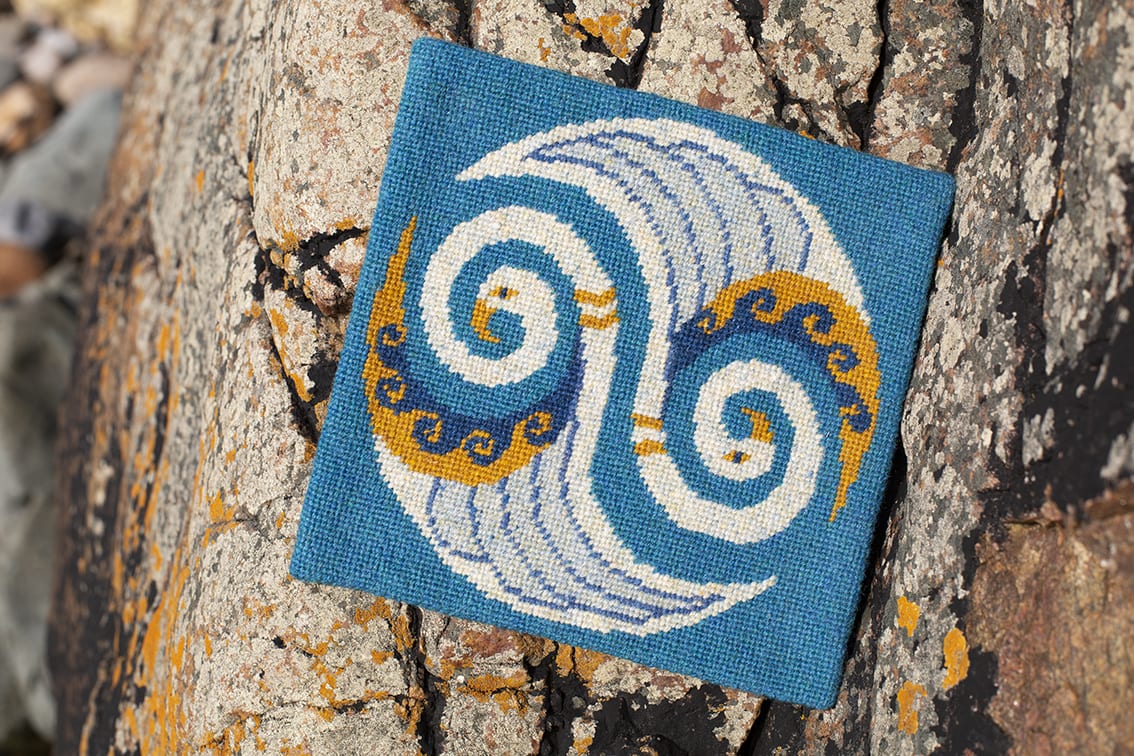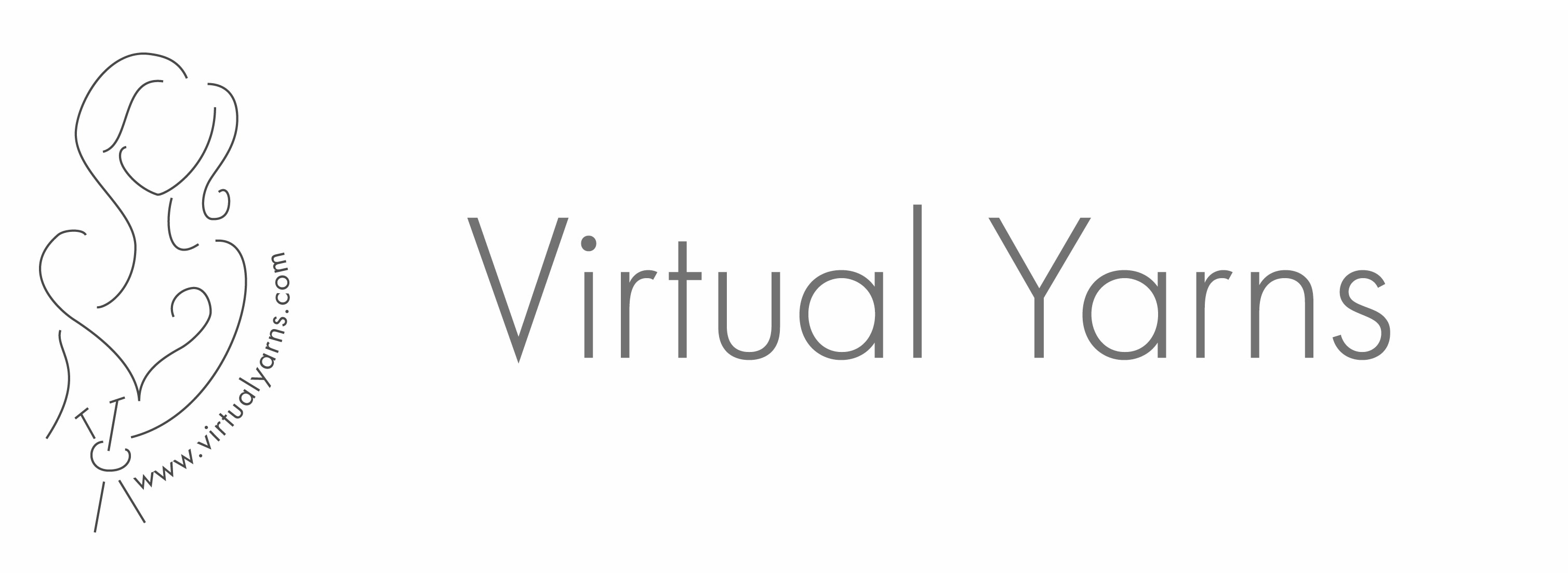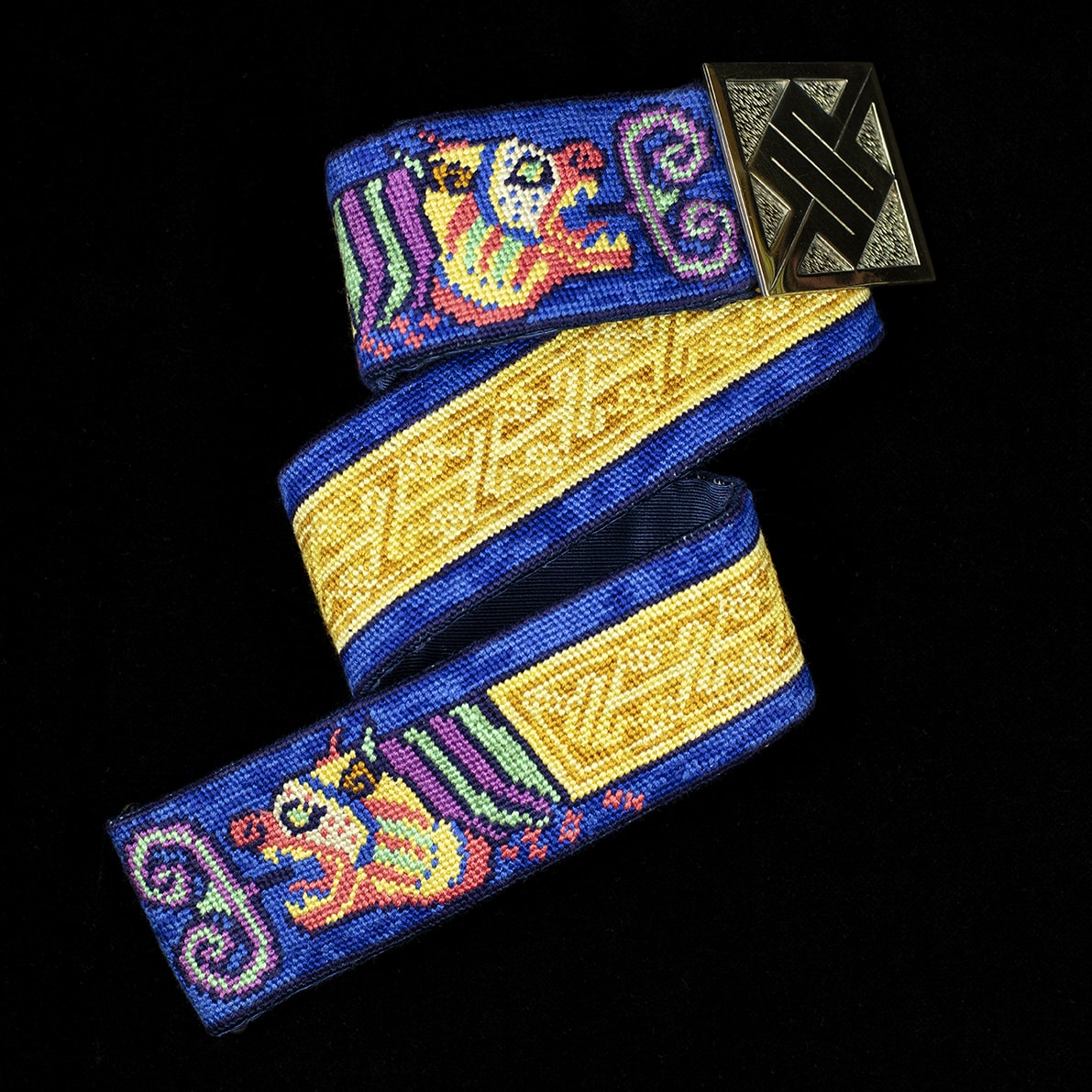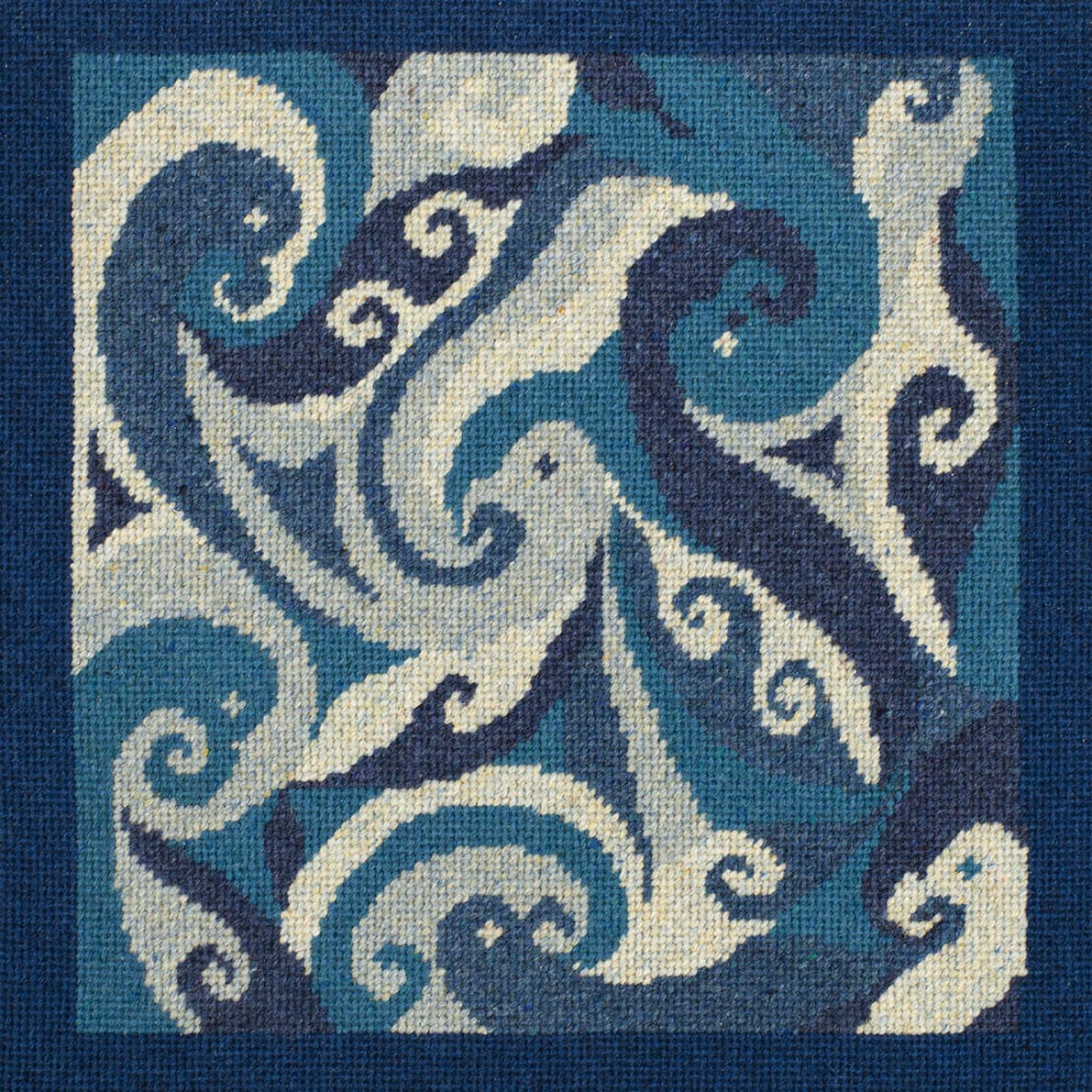
Needlepoint
The Celtic culture in which I was born and brought up has influenced and shaped me profoundly. Being bilingual has given me two windows on the world, each one rich in art, music, poetry and story, and these always affect me and shape my work both consciously and unconsciously.
In modern times we often see cultural heritage used as a marketing tool without any depth, knowledge or understanding of the culture itself. This trivialisation invariably has a negative effect on perceptions of the art and the culture. Celtic culture has suffered greatly in this respect, and Celtic art in particular has been used to the point of being seen as no more than tired old branding slapped onto anything vaguely associated with Gaeldom. This is deeply ironic as it must rank as one of the richest and most intricate forms of artful decoration that humans have ever produced.
I wanted to counter the negative perception of Celtic art and show something of the astonishing beauty and intricacy of the form through my own work. This is why most of my designs in needlepoint are strongly based on Celtic art. I chose to work in needlepoint as it is a suitably slow and laborious medium that lends itself perfectly to working with the most intriguing aspect of the Celtic art form – that balance between abstraction and nature; mathematical exactitude and fantastical natural form can be interlaced and spiralled into endless design possibilities.
Needlepoint does not require the time and skill it would take to create a Celtic manuscript page, drawn on calf vellum with hand-made colours using the single hair of a badger magnified through a drop of water: but in our world of instant gratification it can feel like it comes close. My larger pieces take a long time to make but the results, properly taken care of, have the potential of lasting for at least a few hundred years.


